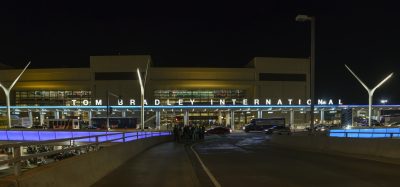Signs of satisfaction
- Like
- Digg
- Del
- Tumblr
- VKontakte
- Buffer
- Love This
- Odnoklassniki
- Meneame
- Blogger
- Amazon
- Yahoo Mail
- Gmail
- AOL
- Newsvine
- HackerNews
- Evernote
- MySpace
- Mail.ru
- Viadeo
- Line
- Comments
- Yummly
- SMS
- Viber
- Telegram
- Subscribe
- Skype
- Facebook Messenger
- Kakao
- LiveJournal
- Yammer
- Edgar
- Fintel
- Mix
- Instapaper
- Copy Link
Posted: 25 November 2005 | Paul Mijksenaar, Principal, Bureau Mijksenaar | No comments yet
In this article, wayfinding expert Paul Mijksenaar shares some of the key concepts and ideas that are shaping people’s routes around airports all over the world.
In this article, wayfinding expert Paul Mijksenaar shares some of the key concepts and ideas that are shaping people’s routes around airports all over the world.
Wayfinding is strongly related to a customer’s satisfaction. A survey by JD Power among frequent flyers at the three major New York airports showed that wayfinding issues play the most significant role in customer satisfaction. So if an airport takes its role seriously and considers customer satisfaction as a non-disputable requirement, efficient wayfinding should be provided.
Wayfinding is recently introduced terminology with which to better express passenger needs. Before it was just a matter of putting up more signs, or larger signs or more larger signs… Signing was part of the architect’s design package or not even that, but fabricated by sign manufacturers as an afterthought.
Of course, in the past, airports were smaller, simpler and more comprehensive in nature. Nowadays there is more of everything: terminals, check-in desks, gates (even more than a hundred), and airport services like airline lounges, banking, shops and retail. Even finding the nearest restroom can be a frustrating experience.
When the building is huge, or when there is a series of buildings, it can also be a physical nuisance to be wrongly directed because of the considerable walking distances. Assume that there can be walking distances of 10-20 minutes, then making the wrong decision increases the walking distance easily to 30-45 minutes! (walking in the wrong direction: 15 minutes; returning: 15 minutes and walking to the right direction: another 15 minutes).
A strong criterion is the desire of most people to be able to find their way by themselves and without repeating questions at every decision point, which can make someone feel stupid and childish. Who dares to admit when he or she isn’t able to find their car in a parking garage on their way out? Or when they cannot understand a complicated 3D ‘exploded’ map? This can all be very annoying and a bad start or ending to any journey.
Agitation affects
All these criteria add to feelings of agitation or even stress. If stress levels become too high, people are no longer attainable for written directions or instructions.
Furthermore, once stress takes over, it takes considerable time to recover from it. Stressed passengers will go directly to the gate and prefer to wait there for hours instead of returning to the food and retail court. Giving directions can also waste an employee’s time.
So, wayfinding is considered to be more than just signs. It concerns the whole process of informing, orientating, navigating and instructing passengers in the easiest and fastest way possible. It helps people feel comfortable and well-treated in a nervous environment where security is becoming tighter.
Successful wayfinding
From our experience and research we developed four main criteria that form the backbone of a good wayfinding approach. A good wayfinding system should be conspicuous in its environment to be noticed, and information should be in sufficient contrast with its background to be legible. All information should be concise and clear. It should also be standardised according to international airport conventions, used consistently throughout the airport and provide confirmation once a destination is reached. Local and airport authority jargon should be eliminated.
Analysing the data of the JD Power survey with the help of the Human Factor Department of Utrecht University (The Netherlands), we observed three main areas of wayfinding problems and categorised them in a hierarchy, to represent the state of stress which passengers might suffer.
1. Departing and arriving.
Getting to your plane on time and collecting baggage on your return are considered activities that cause the most arousal of any air trip.
2. Using airport services.
‘Where are the restrooms?’ is the number one question on most customer satisfaction questionnaires. Other high-ranking needs are the ATM, airline lounges and meeting point.
3. Ground transportation and parking.
Finding taxis, shuttles, rental car facilities and parking can be as stressful as departing, but the difference is that arriving passengers are often tired after a long flight and wish to return home quickly. Business passengers may be anxious because of scheduled meetings.
Reducing reading time
Since we are convinced that an important goal of wayfinding at airports is to reduce stress, we developed a new signing message hierarchy where all information is grouped into one of these three categories. To articulate the categories, we introduced a colour-coding system: yellow signs with black text and symbols for flying information (1); anthracite (dark grey) with yellow text and symbols for directions to airport services (2) and green signs with white text and symbols for all information that directs passengers out of the airport. (3).
Many airports and other public transportation facilities already use some kind of colour-coding system. The main difference is that in most cases colour has been applied to distinguish locations and buildings; terminals, concourses, parking garages and even parking levels. Once inside the building, the function of the colour-coding dissipates.
In some other current signing systems, colour-coding is used by international airports to distinguish the different languages that they use for messages. Some airports have three or even four different languages, such as Switzerland and several Asian airports.
We think this is a waste of a precious and unique visual tool and prefer a typographical difference only (such as bold, italic or even a smaller type size).
The coding-coding system discussed here is founded on different passenger flows and remains consistent and effective from highway to gate (and back).
Standardisation
Travelling from or to one airport is only half of the itinerary and in the case of a transfer only one third of it, meaning some passengers will experience the burden of trying to find their way in two or three airports in a row. There is therefore a strong argument to standardise not only check-in and security procedures, but also to standardise wayfinding on a national or even better, on an international level.
Of course, there have been several attempts. American airport organisations like ATA/AAAE/ACI-NA/ACC produce ‘Guidelines for Airport Signing and Graphics’ (latest version in 2001) but are more useful as inventories or as a check list than as a direct applicable standard of visual means and concepts.
So it is the belief and even strategy of main international airport hubs like the airports operated by the Port Authority of New York & New Jersey (JFK, LaGuardia and Newark) and Amsterdam Airport Schiphol that everyone benefits by obeying similar visual principles. Both of these airport authorities encourage the adoption of their airport signing standards, though with required guarantees for a proper design and correct implementation.
One successful example of effective standardisation is the use of symbols or ‘pictograms,’ which can be found on a majority of airports all over the world and originally based on a series of ‘symbol signs’ created in 1993 by the American Institute of Graphic Arts (AIGA), under contract from the US Department of Transportation (DOT). However they are far from complete, so additional symbols have been created since.
Social issues and fonts
Airports are facing a changing population, ageing but with the luxury of economic means of travelling. The mobility of the impaired is also increasing, partly thanks to modern technology. Their demands are well addressed in the new notion of ‘Universal design’ (Ed: see IAR Issue 1, Accessible aircraft boarding, for an article addressing this topic) and supported by governmental authorities. Criteria such as comprehensiveness, conspicuity and consistency, as mentioned above, are part of the criteria. Others are that signs should be visible within someone’s field of vision and that the used type font provides a high contrast with its background, with a comfortable character height.
In the last twenty years, several type fonts has been developed exclusively for signing and even for airport signing, like the type font ‘Frutiger’ for Charles de Gaulle airport in Paris and the ‘Clearview’, especially for US highway signs.
So recently, wayfinding has developed from a side dish of the architect’s main course, into a strong and highly functional customer satisfaction argument, independent and autonomous from building criteria. In recent years we have developed architectural specification sheets that we share with our clients to be used during the new design of an airport or an extension. Following these specifications helps to create intuitive navigation and better signing.
It has been accepted that the lifespan of a signing system is more likely to reflect organisational changes with a 5 year lifespan rather than an architectural lifespan of 20 years or more. That means that at least the message flow on the signs will encounter a major overhaul every 5 years, but in the meantime incidental text plates will change almost continuously. Cabinetry must be flexible to install, to maintain, to replace and to remove. This flexibility is only one argument for the use of backlit signs everywhere because only then can legibility be guaranteed, regardless of local lighting conditions that comes with the architecture.
Future challenges
One of the two new challenges of wayfinding is to react adequately to the economical need of airports to generate more revenues from concessions. In addition to the three colour-coded signing system, one can consider a supplementary category that incorporates a commercial wayfinding system but with the same high design impact as the regular airport signing.
The second challenge is to develop a personal navigation system that can be used on private cell phones and individualised for every passenger: young or old, frequent or infrequent, impaired or even illiterate. In fact we were able to prove that such a system is feasible in its implementation, but it relies on communication providers to market such opportunities. This proves again that the future of airports will heavily depend on their own wish and power to participate with other airports and connecting transportation systems, all over the rest of the world.
Paul Mijksenaar
Paul Mijksenaar is principal of Bureau Mijksenaar (Amsterdam) and Mijksenaar Arup Wayfinding (New York), a design firm which specialises in wayfinding projects. Among his airport projects belong JFK/LaGuardia/Newark, Columbus Ohio (concept), Olbia Airport Costa Smeralda (Sardinia), Eindhoven Airport, Rotterdam Airport, Aruba Airport (Dutch Antilles) and recently, Washington International Dulles Airport


















